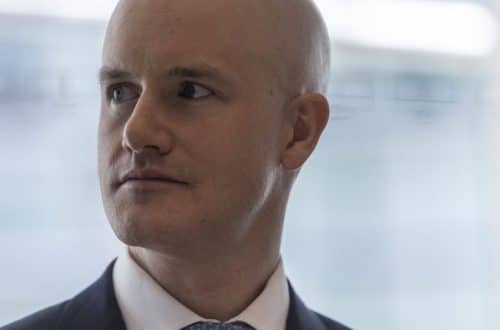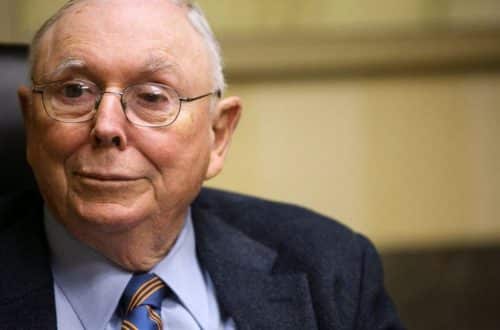
OSC-CEO sagt, dass über 301 TP2T der Kanadier planen, im nächsten Jahr in den Krypto-Markt einzusteigen
- Bei einer Bevölkerung von etwa 38 Millionen geht Vingoe davon aus, dass über 11,4 Millionen Kanadier beabsichtigen, im nächsten Jahr Krypto-Assets zu kaufen.
- Vingoe merkte an, dass die Regulierungsbehörde sehr daran interessiert ist, den Kryptomarkt zu überwachen, ohne Gewinner oder Verlierer auszuwählen.
- Der OSC betrachtet das Scheitern von QuadrigaCX im Jahr 2019 als ein altmodisches Ponzi-Schema, das in den Innovationsjargon gehüllt ist.
In seiner Rede vor dem Economic Club of Canada hob Grant Vingoe, CEO der Ontario Securities Commission (OSC), die notwendigen Regulierungen für den Kryptomarkt hervor, um zukünftigen Wohlstand zu sichern. Vingoe betonte, die Ansicht, Krypto-Assets müssten anders behandelt werden als andere Finanzinstrumente, sei ‘völlig verfehlt’. Der OSC-CEO wies darauf hin, dass frühere Untersuchungen der OSC darauf hindeuten, dass über 30 Prozent der Kanadier planen, in den kommenden Jahren digitale Vermögenswerte als Spekulationsinstrument zu erwerben.
Bei einer Bevölkerung von etwa 38 Millionen geht Vingoe davon aus, dass über 11,4 Millionen Kanadier beabsichtigen, im nächsten Jahr Krypto-Assets zu kaufen.
Als solches merkte Vingoe an, dass die Regulierungsbehörde sehr daran interessiert ist, den Kryptomarkt zu überwachen, ohne Gewinner oder Verlierer auszuwählen.
Nichtsdestotrotz hat die kanadische Regierung wohl großes Interesse daran gezeigt Bitcoin und Äther digitale Vermögenswerte. Während die meisten digitalen Assets in einer Grauzone reguliert werden, hat die OSC Bitcoin und Ethererum als Rohstoffe eingestuft.
Kanada und der Kryptomarkt
Der OSC-Vorsitzende stellte fest, dass der größte Teil des Kryptomarktes maßgeblich in seinen Zuständigkeitsbereich fällt. Darüber hinaus stellte Vingoe fest, dass kanadische Investoren ihnen eine enorme Verantwortung für die Sicherung ihrer Investmentfonds auferlegt hätten.
“Die Aktivitäten der OSC unterliegen unserem vielschichtigen Mandat, das uns zum Handeln verpflichtet, sobald etwas in unseren Zuständigkeitsbereich fällt – und die überwiegende Mehrheit der Krypto-basierten Unternehmen tut dies eindeutig. Bitcoin und Ether beispielsweise gelten aufgrund ihres Umfangs und des Fehlens einer zentralen Steuerung allgemein als Rohstoffe”, so Vingoe. sagte während des Gipfels am Donnerstag.
Die kanadischen Aufsichtsbehörden befürchten eine Wiederholung von 2019, als über $100 Millionen durch den QuadrigaCX-Skandal vernichtet wurden. Insbesondere betrachtet der OSC das Scheitern von QuadrigaCX im Jahr 2019 als ein altmodisches Ponzi-Schema, das in den Jargon der Innovation gehüllt ist.
Das Land hat enorme Fortschritte bei der Regulierung des schnell wachsenden Kryptowährungsmarktes gemacht. Bereits Anfang 2019 schlugen CSA und IIROC einen Regulierungsrahmen für Krypto-Asset-Handelsplattformen vor und arbeiteten eng mit der Branche zusammen, wie dieser aussehen sollte.
Bis August 2020 hatten die Regulierungsbehörden des Landes die erste Plattform für die Bereitstellung von Diensten in Ontario zugelassen. Im März des Vorjahres veröffentlichte die CSA Leitlinien zur Verbesserung der Qualität der Offenlegungen von Emittenten meldepflichtiger Krypto-Assets.
Kanada verfügt über eine der weltweit führenden Volkswirtschaften und ist daher ein Schlüsselfaktor für die zukünftige Einführung neuer Technologien. Zudem gibt es im Land sowohl institutionelle als auch private Anleger, die bereit sind, in zukunftsträchtige Technologiemärkte zu investieren. Vingoe betonte daher, dass Anleger beim Handel mit spekulativen Vermögenswerten auf Sicherheit vertrauen können müssen.
“Es ist wichtig, dass Bemühungen zum Schutz des öffentlichen Interesses nicht in nicht-regulatorische Debatten hineingezogen werden, wie wir sie immer häufiger im Zusammenhang mit Krypto-Assets, ESG und anderen Bereichen beobachten. Wir müssen uns stets an unsere Mandate halten und andere dazu auffordern, unsere Arbeit in diesem Licht zu bewerten”, sagte Vingoe.







